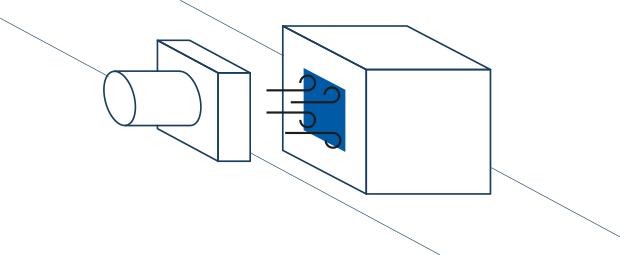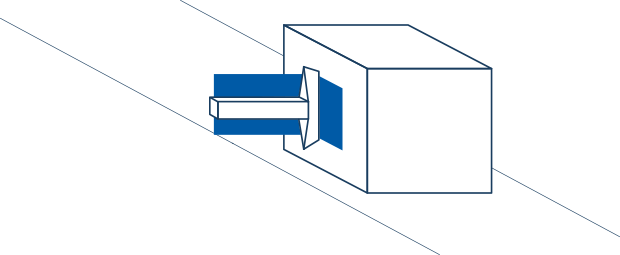Print and apply labelling refers to the process of printing labels with the correct information – whether logistical, safety, or any other pertinent data – and then the subsequent application of the printed labels onto a product, or the container that a product is in.
Application can be achieved in a variety of ways, with compressed air a key component of traditional air-blow and tamp applicators. However, with sustainability a key consideration for manufacturers, electric-only machines offer a viable alternative.
With a range of options to choose from, our label applicator guide to the different types of print and apply applicators that could work for your packaging lines.
Air-Blow
Air-blow applicators utilise a burst of compressed air to apply a label. Typically, two air lines feed to an applicator – one sucks like a vacuum to hold a label in situ, and when the label needs to be applied, the vacuum is turned off and the second line blows to push the label from the applicator and affix it to the packaging.
This method means the applicator never makes contact with the case, pallet or other form of outer packaging, air alone places the label onto the product in the correct orientation and position. Offering increased flexibility for packaging lines, air-blow label applicators work on a variety of different packaging lines for a range of different products and labelling solutions.
Our print and apply machines use air-blown applicators to label the front and/or sides of packs, cases, and shrink-wrapped packs.

Tamp
Tamp label application is similar to air-blow, in that it uses compressed air to apply the labels. However, tamp application also uses a pneumatic assembly or a servo to provide greater flexibility with regards to distance. The tamp label applicator can be used to apply labels to harder-to-reach areas, such as between guide rails, along the side of pallets, or other harder labelling processes.
The tamp applicator can be further away from the surface that the label will be put on, enabling a greater range of movement than an air-blow application.
Airblow can also be combined with tamping, adding extra pressure to the label to ensure adhesion.

Wipe-On
Wipe on, or merge application, is a geometric approach to labelling, using the geometry of the machine to match the speed of the conveyor. The label is wiped-on, or merged, with the product, case, or shrink-wrapped pack as it passes by the applicator, and as a result, doesn’t require any compressed air.
Unlike air-blow application or tamping, the wipe-on method of label application can be run using only electricity, providing a greener and easier-to-maintain setup. Wipe-on application is ideal for stable, fast-moving packaging lines such as shrink-wrapped packs moving along a conveyor belt.

Which label applicator is right for your packaging line?
There’s no “one-size-fits-all” answer to the question. Each method, and the machines that print and apply the labels, suits a different need and of course are dependent on the compressed air policy for your business.
The differences between labelling slow-moving pallets and shrink-wrapped packs of deodorant cans moving at high-speed mean that there isn’t one solution, although for the full range of options, don’t hesitate to speak with experts on the Cobalt team, and we’ll point you in the right direction.
Get in touch with Cobalt for more information on the different print and apply machines and their suitability for your situation, or check out our print and apply systems.
Call 01270 539800 or email sales@cobaltis.co.uk.
